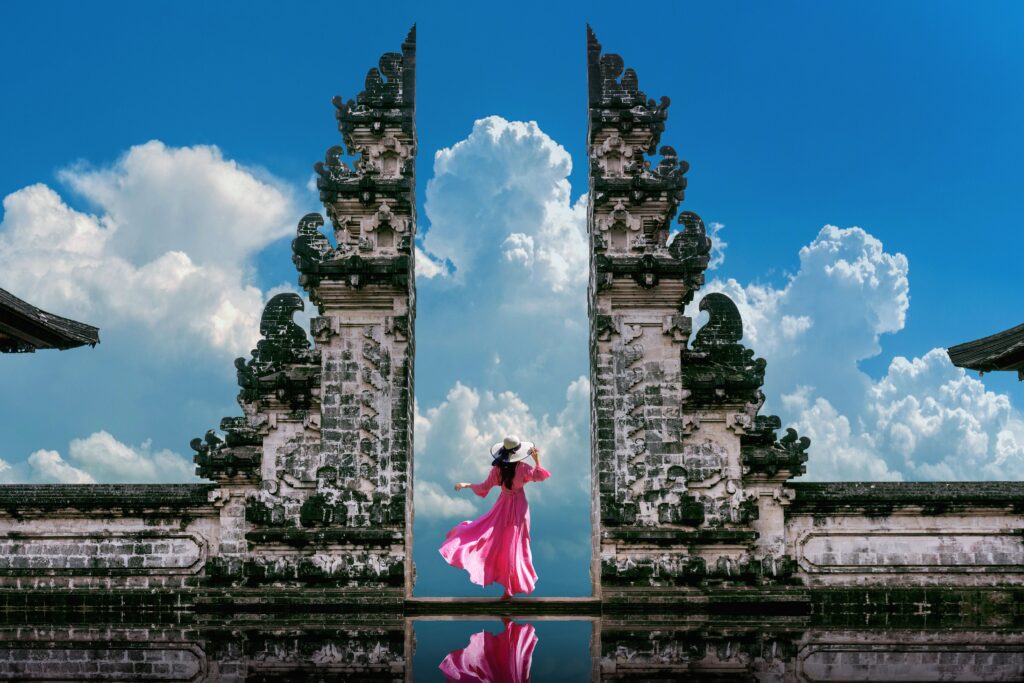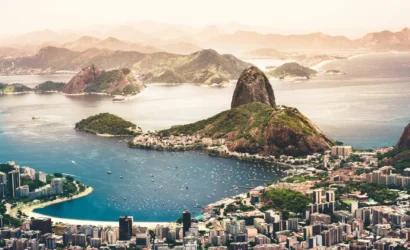Uluwatu Temple is located in the Pecatu Traditional Village, South Kuta District, Badung Regency.Located at the southwest tip of Bali on a steep, high rock platform jutting out into the sea, this temple is a Sad Kayangan Temple, believed by Hindus to support the nine cardinal points. Originally, this temple served as a place of worship for an 11th-century holy priest named Empu Kuturan, who passed down the teachings of the Traditional Village and all its rules.This temple is also used to worship a subsequent holy priest, Dang Hyang Nirartha, who arrived in Bali in the late 1550s and concluded his sacred journey with what is known as Moksa or Ngeluhur (self-actualization) here. This word is the origin of the name Pura Luhur Uluwatu.Uluwatu Temple is situated 97 meters above sea level. In front of the temple is a small forest called alas kekeran, which serves to support the temple’s sanctity.Uluwatu Temple has several Pesanakan temples, temples closely related to the main temple. These are Pura Bajurit, Pura Pererepan, Pura Kulat, Pura Dalem Selonding, and Pura Dalem Pangleburan. Each of these temples is closely connected to Uluwatu Temple, especially during its piodalan (anniversary celebration). The piodalan (anniversary celebration) at Uluwatu Temple, Bajurit, Pererepan, and Kulat falls on a Tuesday Kliwon (Kliwon Tuesday) in the month of Medangsia every 210 days. The manifestation of God worshipped at Uluwatu Temple is the god Rudra.
Trip Info
-
Rush
Pura Uluwatu
Uluwatu Temple is located in the Pecatu Traditional Village, South Kuta District, Badung Regency.
Located at the southwest tip of Bali on a steep, high rock platform jutting out into the sea, this temple is a Sad Kayangan Temple, believed by Hindus to support the nine cardinal points. Originally, this temple served as a place of worship for an 11th-century holy priest named Empu Kuturan, who passed down the teachings of the Traditional Village and all its rules.
This temple is also used to worship a subsequent holy priest, Dang Hyang Nirartha, who arrived in Bali in the late 1550s and concluded his sacred journey with what is known as Moksa or Ngeluhur (self-actualization) here. This word is the origin of the name Pura Luhur Uluwatu.
Uluwatu Temple is situated 97 meters above sea level. In front of the temple is a small forest called alas kekeran, which serves to support the temple’s sanctity.
Uluwatu Temple has several Pesanakan temples, temples closely related to the main temple. These are Pura Bajurit, Pura Pererepan, Pura Kulat, Pura Dalem Selonding, and Pura Dalem Pangleburan. Each of these temples is closely connected to Uluwatu Temple, especially during its piodalan (anniversary celebration). The piodalan (anniversary celebration) at Uluwatu Temple, Bajurit, Pererepan, and Kulat falls on a Tuesday Kliwon (Kliwon Tuesday) in the month of Medangsia every 210 days. The manifestation of God worshipped at Uluwatu Temple is the god Rudra.



